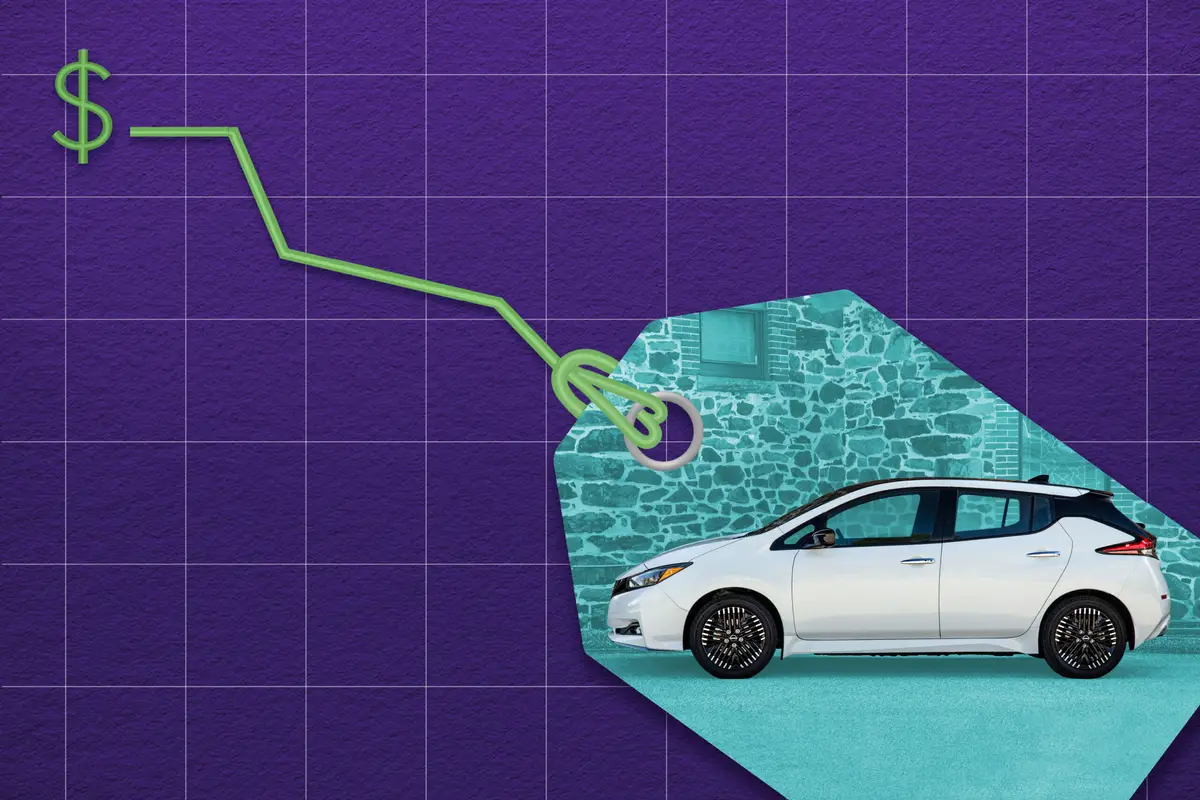Video: 2017 Toyota Prius Prime Review
By Cars.com Editors
June 28, 2017
Share
About the video
Toyota's redesigned the Prius Prime plug-in for 2017, and it's got a lot to like - with some misses. Watch the video for more.
Transcript
(car engine roaring) Toyota's Prius was new for 2016. And for 2017, the automaker redesigned the plug-in version, now called the Prius Prime.
And although it's quirky in the driving department and really out there in the styling department, its electric car range, fuel economy, and overall green car mission are admirable. It's price is competitive too. Let's check out some key hits and misses of the Prius Prime. The cabin has a sleek, clean design anchored by this huge multimedia screen. It controls audio, navigation, and climate functions, and also displays things like charging times and battery info. It's responsive and overall very well done with an intuitive split menu structure, modern graphics, and a really handy pinch-and-zoom function. However, instead of volume and tuning knobs, there are these touch sensitive buttons which are less user-friendly. Also, the screen can get really dusty, especially in direct sunlight which impacts visibility. And lastly, one more tiny annoying thing, when the backup camera's engaged, it takes up only a very small portion of the screen. Also, as high tech as this looks and feels, it's behind the times in terms of smartphone compatibility. Android Auto and Apple CarPlay are not available. In EV Mode, the Prime has a lot of zip off the line. Thanks to near instant electric torque. But that pep is dealt a bit in regular hybrid mode. Some other things will take more getting used to, however. The gas pedal has a dead zone. So there's a delay between what your foot's doing and power delivery unless you really mash the pedal, which might get your hybrid driver card revoked. The brake pedal, however, feels more natural and responsive than other hybrids that also use the energy capturing regenerative braking system. Around town, firm direct steering makes it feel nimble, but cornering is a weak spot. The Prime is a couple hundred pounds heavier than the regular Prius, and you feel it in sweeping corners where the backend tends to sweat. It's EPA-rated to get 25 miles of electric-only range. And we found that that number is more than attainable. In fact, one editor was able to routinely go 30 miles on just electricity alone driving normally. The battery does not like heat, however. When temperature spiked around 80 degrees during our test, range slipped. It did come back a little when we turned off the AC, however. When range is depleted, it functions as a regular hybrid with an EPA rating of 55, 53, 54 miles per gallon; city, highway, combined. Slightly better than the regular Prius's rating. Charging times are reasonable too. On a household outlet, it needed about 5 1/2 hours to go from zero to full. The Prime has seats for four instead of five like the regular Prius. Instead of a center seat, it has an armrest with cup holders and a storage box. The seats themselves also feel a bit odd because the battery under the seats raises them up. They're also kind of bucket-like and they feel a little confining. The battery's placement also affects cargo room. Behind the rear seats, there's 19.8 cubic feet of space, more if you pull the seats down. But that's considerably less than the regular Prius. This load floor is also higher, which makes package loading a little more awkward. Other plug-ins offer similar electric range and fuel economy, but fly under the radar with more normal car looks. However, compared with other plug-ins, the Prime's value is hard to beat. It starts at around $28,000, about $3,500 more than the regular Prius, but a lot less than plug-in competitors like the Chevy Bolt and Kia Optima. If you opt for the Prime, just make sure you're ready for some raised eyebrows on the street.
Featured stories

By Cars.com Editors
July 14, 2025

By Robert Duffer
July 11, 2025

By Jared Gall
June 27, 2025
